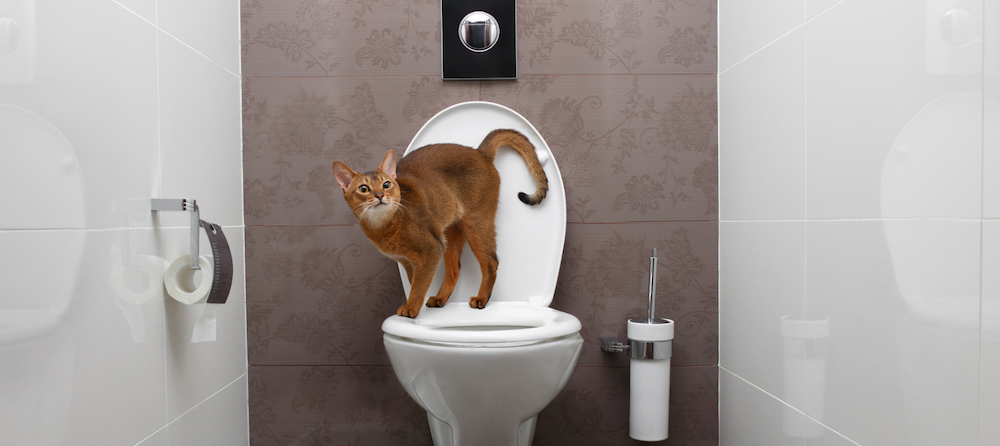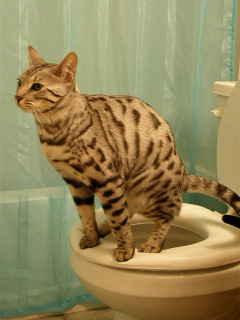We've encountered the article involving How to Dispose of Cat Poop and Litter Without Plastic Bags listed below on the net and decided it made sense to relate it with you in this article.

Intro
As cat owners, it's important to bear in mind just how we dispose of our feline friends' waste. While it might seem convenient to purge cat poop down the toilet, this practice can have harmful consequences for both the atmosphere and human health and wellness.
Environmental Impact
Flushing pet cat poop presents dangerous pathogens and bloodsuckers right into the water supply, posing a significant risk to aquatic ecosystems. These impurities can adversely influence marine life and compromise water quality.
Wellness Risks
Along with ecological problems, purging cat waste can also pose health and wellness risks to human beings. Pet cat feces may include Toxoplasma gondii, a parasite that can create toxoplasmosis-- a possibly extreme ailment, especially for expecting women and people with weakened immune systems.
Alternatives to Flushing
The good news is, there are more secure and a lot more accountable means to get rid of feline poop. Think about the adhering to alternatives:
1. Scoop and Dispose in Trash
One of the most typical method of dealing with pet cat poop is to scoop it right into a naturally degradable bag and throw it in the trash. Make sure to make use of a specialized clutter scoop and deal with the waste without delay.
2. Usage Biodegradable Litter
Choose eco-friendly feline clutter made from materials such as corn or wheat. These clutters are environmentally friendly and can be securely disposed of in the trash.
3. Bury in the Yard
If you have a lawn, consider hiding feline waste in a marked location away from veggie gardens and water resources. Make certain to dig deep sufficient to prevent contamination of groundwater.
4. Set Up a Pet Waste Disposal System
Invest in a family pet waste disposal system particularly made for pet cat waste. These systems use enzymes to break down the waste, lowering smell and environmental influence.
Conclusion
Liable pet possession extends beyond providing food and sanctuary-- it also involves correct waste management. By refraining from flushing feline poop down the toilet and opting for alternative disposal techniques, we can minimize our ecological footprint and secure human health.
Why Can’t I Flush Cat Poop?
It Spreads a Parasite
Cats are frequently infected with a parasite called toxoplasma gondii. The parasite causes an infection called toxoplasmosis. It is usually harmless to cats. The parasite only uses cat poop as a host for its eggs. Otherwise, the cat’s immune system usually keeps the infection at low enough levels to maintain its own health. But it does not stop the develop of eggs. These eggs are tiny and surprisingly tough. They may survive for a year before they begin to grow. But that’s the problem.
Our wastewater system is not designed to deal with toxoplasmosis eggs. Instead, most eggs will flush from your toilet into sewers and wastewater management plants. After the sewage is treated for many other harmful things in it, it is typically released into local rivers, lakes, or oceans. Here, the toxoplasmosis eggs can find new hosts, including starfish, crabs, otters, and many other wildlife. For many, this is a significant risk to their health. Toxoplasmosis can also end up infecting water sources that are important for agriculture, which means our deer, pigs, and sheep can get infected too.
Is There Risk to Humans?
There can be a risk to human life from flushing cat poop down the toilet. If you do so, the parasites from your cat’s poop can end up in shellfish, game animals, or livestock. If this meat is then served raw or undercooked, the people who eat it can get sick.
In fact, according to the CDC, 40 million people in the United States are infected with toxoplasma gondii. They get it from exposure to infected seafood, or from some kind of cat poop contamination, like drinking from a stream that is contaminated or touching anything that has come into contact with cat poop. That includes just cleaning a cat litter box.
Most people who get infected with these parasites will not develop any symptoms. However, for pregnant women or for those with compromised immune systems, the parasite can cause severe health problems.
How to Handle Cat Poop
The best way to handle cat poop is actually to clean the box more often. The eggs that the parasite sheds will not become active until one to five days after the cat poops. That means that if you clean daily, you’re much less likely to come into direct contact with infectious eggs.
That said, always dispose of cat poop in the garbage and not down the toilet. Wash your hands before and after you clean the litter box, and bring the bag of poop right outside to your garbage bins.
https://trenchlesssolutionsusa.com/why-cant-i-flush-cat-poop/

I have been very involved in Don’t flush cat feces down the toilet and I am hoping you appreciated the blog entry. Liked our entry? Please share it. Help other people find it. Thanks a bunch for your time. Visit us again soon.
Call Today